skip to main |
skip to sidebar
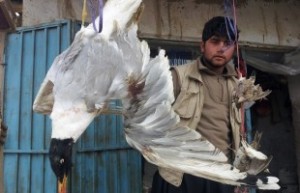 Untold
numbers of migratory birds are being caught and killed every year in
Afghanistan, helping drive species like the Siberian Crane to the verge
of extinction.
Untold
numbers of migratory birds are being caught and killed every year in
Afghanistan, helping drive species like the Siberian Crane to the verge
of extinction.
Hunters say other bird populations are also declining
rapidly, raising fears among environmentalists.
BBC (h/t Susan K) Noar
Agha loads small stones into the leather pouch attached to his homemade
sling shot. “This is like a big transit airport for birds,” he says,
pointing to a lush valley ringed by snowy Hindu Kush peaks in Parwan
province, about 160km (100 miles) from Kabul. Syed Khel district’s wheat fields and orchards offer a perfect resting point for migratory birds.
“Thousands of White-naped Cranes,
flamingos, ducks, falcons and sparrows migrate from India and Pakistan
when summer temperatures begin to rise there. They make a stopover here
before taking off for Russia. That’s when we make a move,” Mr Agha says.
About a dozen of his grandchildren nod
in appreciation. Then a boy perched on a tree top waves a piece of
cloth and Mr Agha orders everyone to scatter. Soon a huge flock of
sparrows descends on the valley.
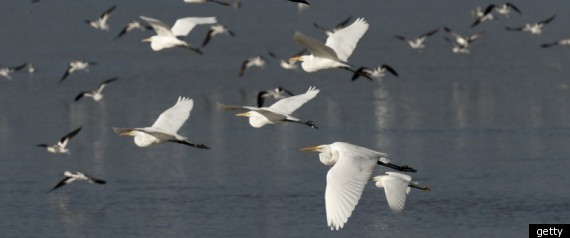
He and his grandchildren fire a volley
of stones from their sling shots. As dozens of sparrows crash to the
ground, three hunting dogs are let loose. They quickly retrieve the
injured birds, including those that dropped far from sight.
Like Noar Agha, many Afghans hunt
birds for meat. There is also a thriving trade in canaries and finches
which are trapped, sold and smuggled to Iran, Pakistan and Gulf
countries, where they are popular as house pets.
The head of Afghanistan’s Environment
Protection Agency, Mustafa Zahir, recently told a local TV news channel
that nearly 5,000 birds are smuggled out of the country every year. That
may be a conservative estimate. Many of these are falcons and Houbara
Bustards – the latter widely prized as quarry by hunters in the Gulf.
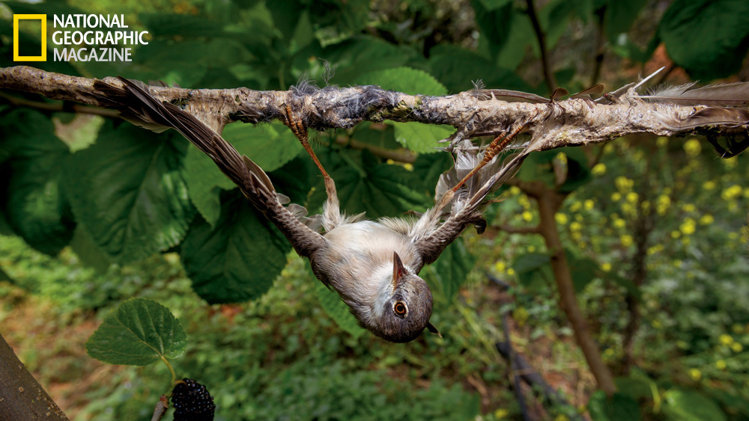
With the Afghan economy in tatters,
hunting and trading in birds offers a welcome source of income for many
struggling Afghans. Markets selling birds of all shapes and sizes – dead
or alive – are fairly common in remote areas like Syed Khel and
Kohistan. “This is how I make a living,” says one hunter in a bird bazaar in Kohistan, pointing to a sack full of dead sparrows.
In a country which has seen decades of
war, the welfare of birds is low on the list of priorities. The
Siberian Crane, once a regular visitor en route to India, has not been
sighted in Afghanistan since 1999. It is now listed as globally
critically endangered. Other birds are also now less common, say Afghan
hunters.
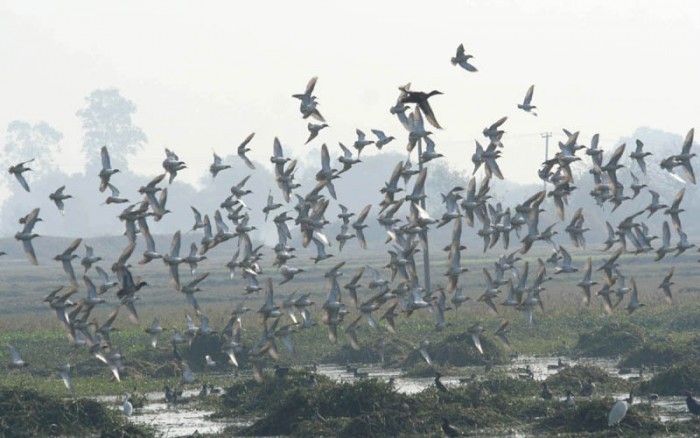
“My elders used to talk about cranes,
flamingos, wild ducks and quails. These birds were very common in this
part of the country. But now it is no longer so,” says 27-year-old
Mohammad Wahid. That view is shared by Mohammad Agha, 70: “There are just too many hunters… so the birds have fled.”
A few kilometres along the Panjshir
river in Kohistan district, Haji Dost Mohammad has hunted ducks for half
of his life and says every house in his village has a shotgun. Mr
Mohammad, 40, starts his days early during the migrating season.
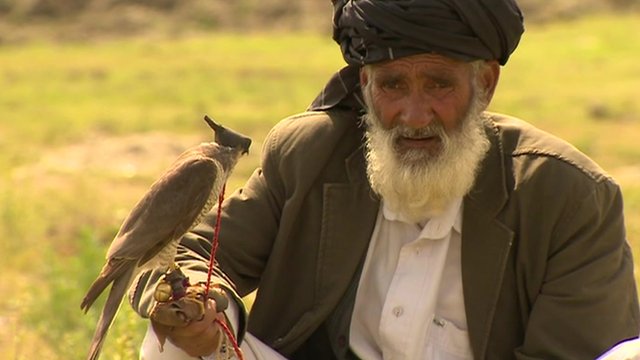
“Every day before sunrise, we put
stuffed ducks in our village pond. When a flock of birds arrive, drakes
are attracted to the pond. We wait as the drakes try to pair up with the
stuffed ducks. Just when they are about to settle on the pond, we
fire,” he says.
Huge nets are
used, too, to trap entire flocks of birds. ”They spread themselves
across the gaps in the mountains carrying the ends of these nets. When a
flock passes through the gap the ends are pulled, forcing hundreds of
birds to fly straight into the nets,” one village elder said.
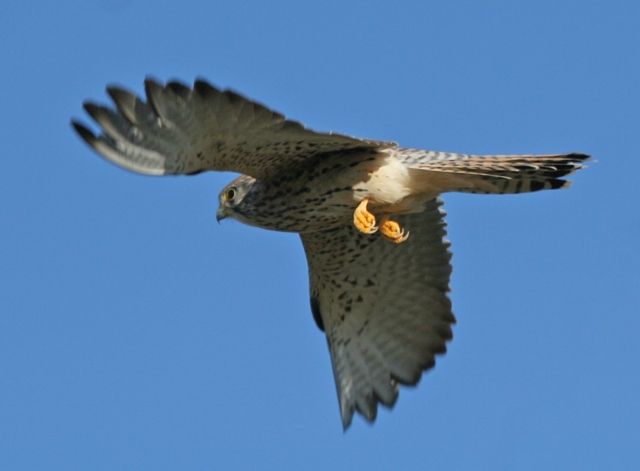
In some places, large wooden bird
boxes with paraffin lamps are hung on trees. The warmth draws the birds,
which fall into the concealed trap. Such methods can result in huge
catches. I saw one hunter bagging up birds by the hundred for a local
party. Two local shopkeepers caught at least 500 birds each in a single
day to sell at market.
The authorities say they are aware of
the situation, with one senior official in Parwan even calling it a
“genocide of birds”. Some birds may have changed their migration routes,
which would explain the apparent drop in their numbers in Afghanistan.
Or Afghans may be wiping them out.
“Thirty years ago, I used to shoot
500-700 sparrows a day with my sling shot,” says Haji Shakoor, 57, from
Salang valley. “The sky used to be full of birds. But now it seems so
empty.”
When they aren’t killing or selling them, Afghans enjoy betting on bird fights.
Naharnet
The sun has barely risen and already dozens of Afghan men are swapping
fistfuls of bank notes, frantically betting in one of the country’s
goriest pastimes: bird fighting. In a shady patch, under a cluster of
trees in a Kabul park, two partridges face off at opposite ends of a
small square of dirt. The spectators press closer, roaring the birds on
as they clutch their cash.
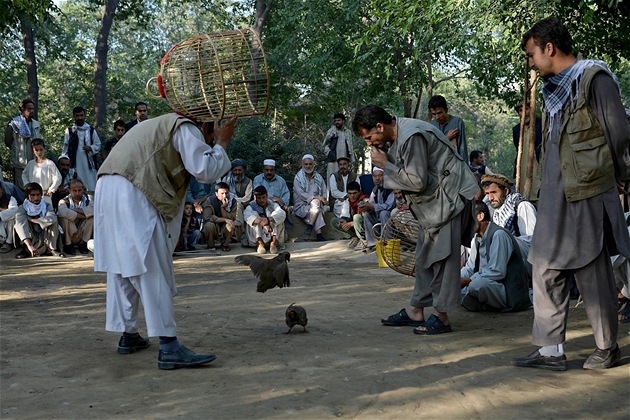
A man sprinkles water into the air to
keep the stifling heat at bay for the birds, an action that recalls the
throwing of salt at the start of a Sumo bout. ”These two birds are very
good. The fight could last 10 minutes to two hours,” said Hafizullah, a
large man in his 50s, wearing a red and white turban.
Under the 1996-2001 Taliban regime,
such a scene would have been unthinkable. The Islamists banned all forms
of gambling and animal fighting.
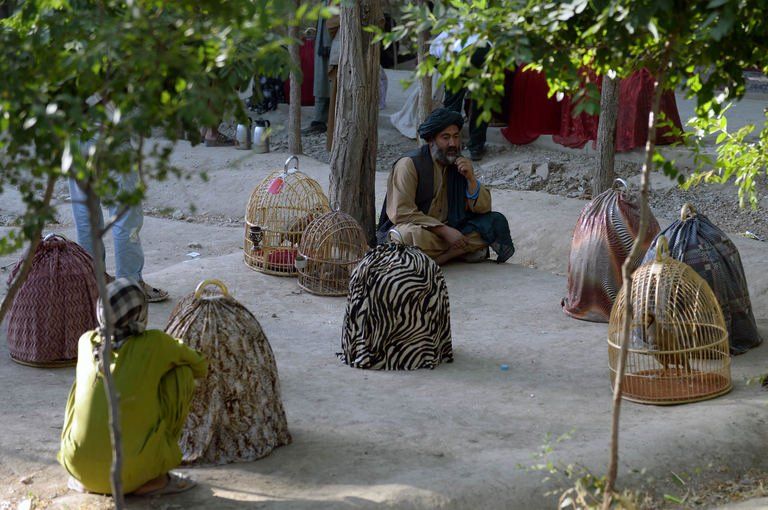
But under the Western-backed
government of today, fights between anything from quails to bulls have
been restored as a violent aspect of daily life in Afghanistan — as is
the war between Taliban insurgents and 100,000 NATO troops.
In the second round, one partridge
grabs the other by the neck before being thrown off. As the fight goes
on, bets rise. ”At the beginning, bets were like $200, but now it’s $800
and it’s going to be higher. This fight will continue until one of them
runs away,” says Hafizullah.
Gradually the birds become caked in
mud, they shed feathers and become more and more aggressive, fired up by
the violence and shouts from the crowd.
Shokrullah says the best fighters come
from Pakistan, ironically from the southwestern city of Quetta,
associated as a hiding place for Taliban leaders. He seems
philosophical about the dangers and the cruelty in a country exposed to
three decades of war and fighting. ”This is mainly like a boxing match
and as you know sometimes boxers do die during the fight,” he said.
But these fighting birds and their
trade — a wild mix of money and blood, and inevitable cruelty which that
entails, is not to everyone’s liking. ”We condemn any kind of fighting
among animals, whether it includes bird-fighting or dog-fighting because
it’s cruel,” said Aziz Gul Saqeb, the director of Kabul zoo.
“We did as much as we could to stop
it,” he said. “But fighting animals have become a tradition.
Particularly in rural parts of the country, dog-fighting and
bird-fighting have become very common.” ”Nothing can exceed the passion
of Afghans for this kind of sport, almost every boy in the street may be
seen with a quail in his hand and crowds assemble in all parts of the
city to witness their game battles.”
 Untold
numbers of migratory birds are being caught and killed every year in
Afghanistan, helping drive species like the Siberian Crane to the verge
of extinction.
Untold
numbers of migratory birds are being caught and killed every year in
Afghanistan, helping drive species like the Siberian Crane to the verge
of extinction. 







Aucun commentaire:
Enregistrer un commentaire